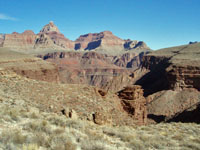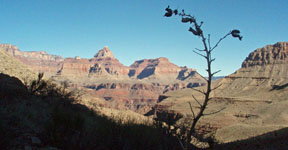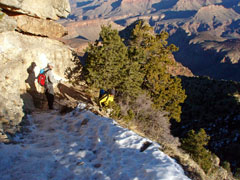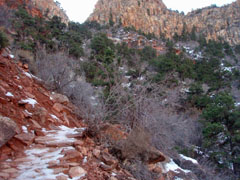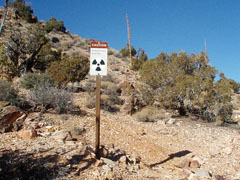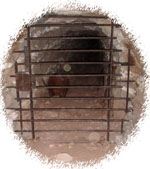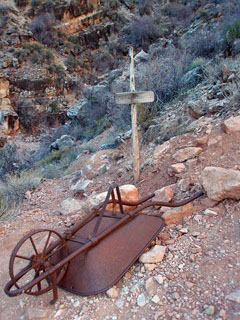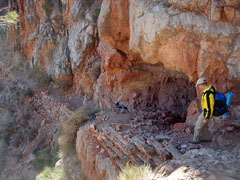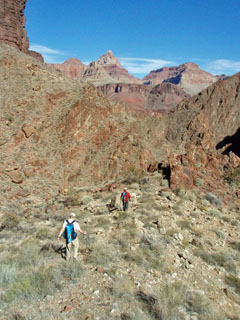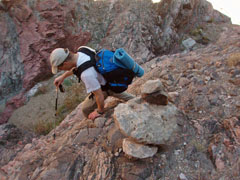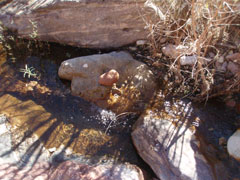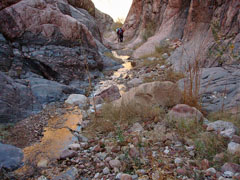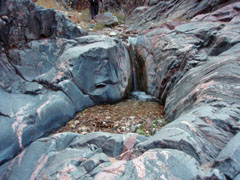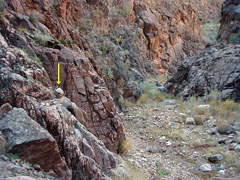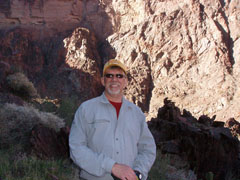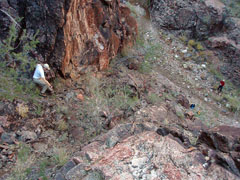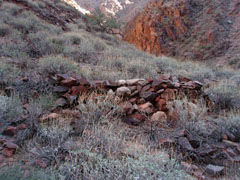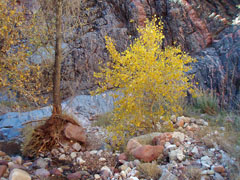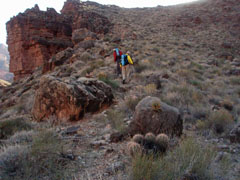Late in the 19th century, John Hance staked some mining claims in the Grand Canyon, accessed by a trail he improved near to present-day Grandview Point. He soon turned most of his efforts to cultivating the tourist trade, then in its infancy.
Later, Pete Berry staked copper claims on Horseshoe Mesa and built the Grandview Trail to access his mines. Although he didn’t give up on the mining operation, he also promoted the tourist trade and built the aptly named Grandview Hotel, which competed with the growing tourist facilities at today’s South Rim Village.
On the first Saturday of 2012, John Eastwood, Duncan Orr and I planned a day hike down the Grandview Trail, past the heart of Berry’s old Last Chance mining operation, then down to Hance Creek. From there, we’d try to reach the Colorado River at Sockdolager Rapids.
Once the snow falls in winter, Grand Canyon hiking becomes quite treacherous.
Even on the best of trails, you need to wear some kind of footwear traction device in order to cope with steep icy sections. All three of us were wearing Kahtoola Microspikes, whose parent company is headquartered in Flagstaff.
We wore ours for about an hour and a half, covering about two of the three miles from the trailhead to Horseshoe Mesa. The Park Service has done much to improve the Grandview Trail in recent years, although it is still a rough trail.
Just before the final drop to Horseshoe Mesa we cached water for our return. We had left the rim at 8:40 a.m. and had reached this spot two hours later. From here, we descended east off the mesa to the Tonto Plateau. Near the base of the Redwall cliffs, the trail passes over the mine tailing of one of the major horizontal entrance shafts for Berry’s mine. You used to be able to walk quite a ways back in here and see the copper veins in the walls. But these shafts, called “adits,” are now gated.
The usual way into Hance Creek is to hike south and east to where the trail crosses the creek bed. But a few years ago I spied a route that would get you through the Tapeats cliffs and down to the creek much closer to the river. By noon, we were on this route. You can tell it is an old trail, as it still has tell-tale zigzags and is marked with many small cairns to keep you on track.
It only took us about 20 minutes to reach the creek, which was flowing quite well. The advantage of a hike in winter is that inner canyon temperatures are just about perfect. The disadvantage is that the days are short.
The route down the creek to the river is challenging. There are three or four, places where the bed is blocked, and one must bypass these obstructions. These bypasses involve quite a bit of climbing, loose rock and uncertain footing.
Thirty minutes after reaching the creek, we came to the first waterfall. After some searching we located the bypass — a climb up a steep ramp of crumbly schist. As it was already 1 p.m. we decided that reaching the river was an impossible task. So we dropped our packs and scrambled up the bypass just to see what it was like.
We ended up 50 to 75 feet above the creekbed before we were on a more gentle route back down. From here the river was maybe a mile away. Tantalizingly close but too hard a road for us to complete this day.
After a late lunch that lasted nearly until 2 p.m., we were ready to head back up to the rim. By 4 p.m. we had seen the last of the sun for this day. The wind kicked up, causing me to put on my fleece coat to keep warm.
Soon we were up above Horseshoe Mesa retrieving our water. By 5 p.m. we were back on the trail, and it took us another two hours to reach the rim. We wore our spikes over the last two miles, and the last hour was well after sunset. But a nearly full moon made the last mile quite magical.
Dennis Foster lives in Flagstaff and has been an avid hiker in Grand Canyon since 1977.

